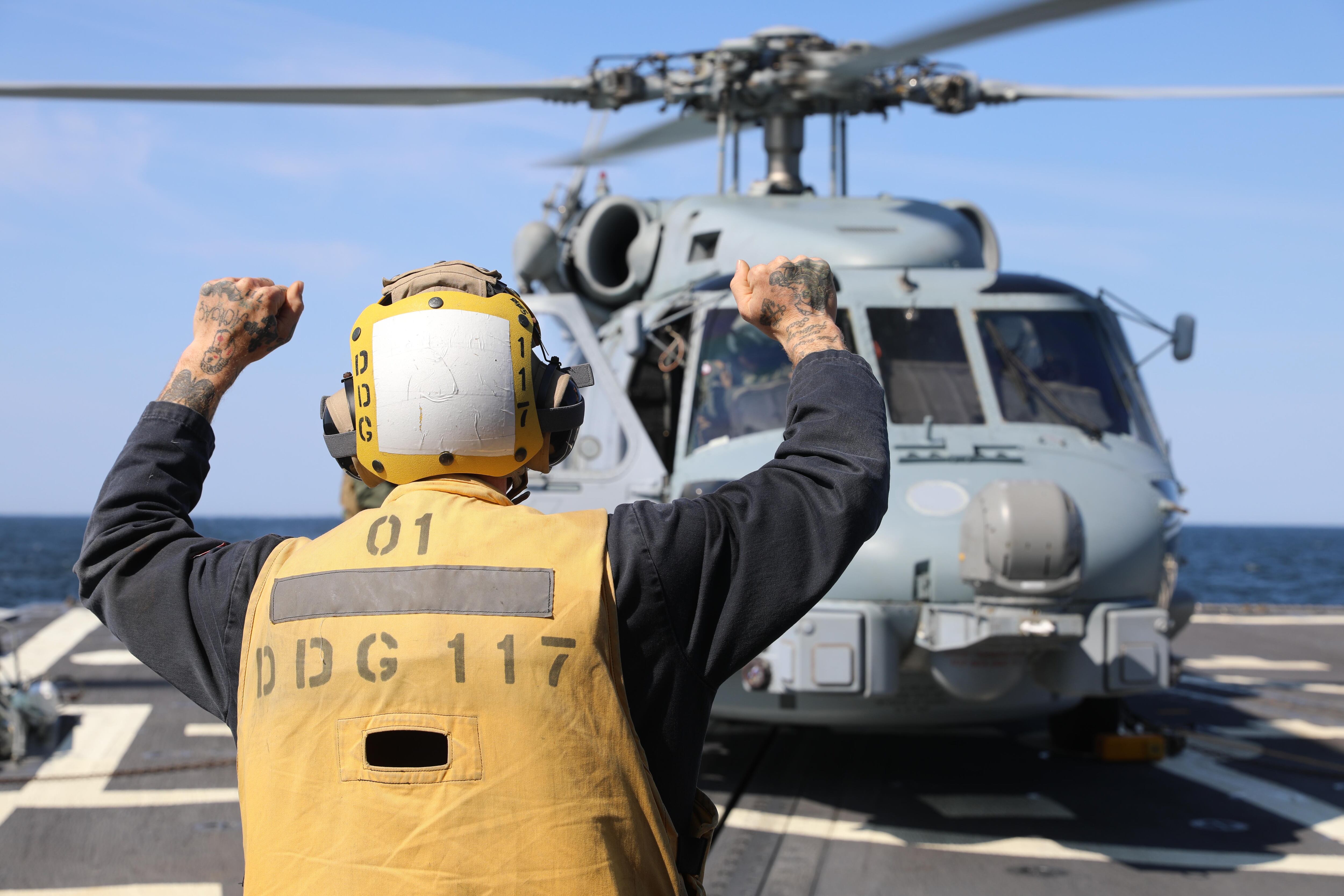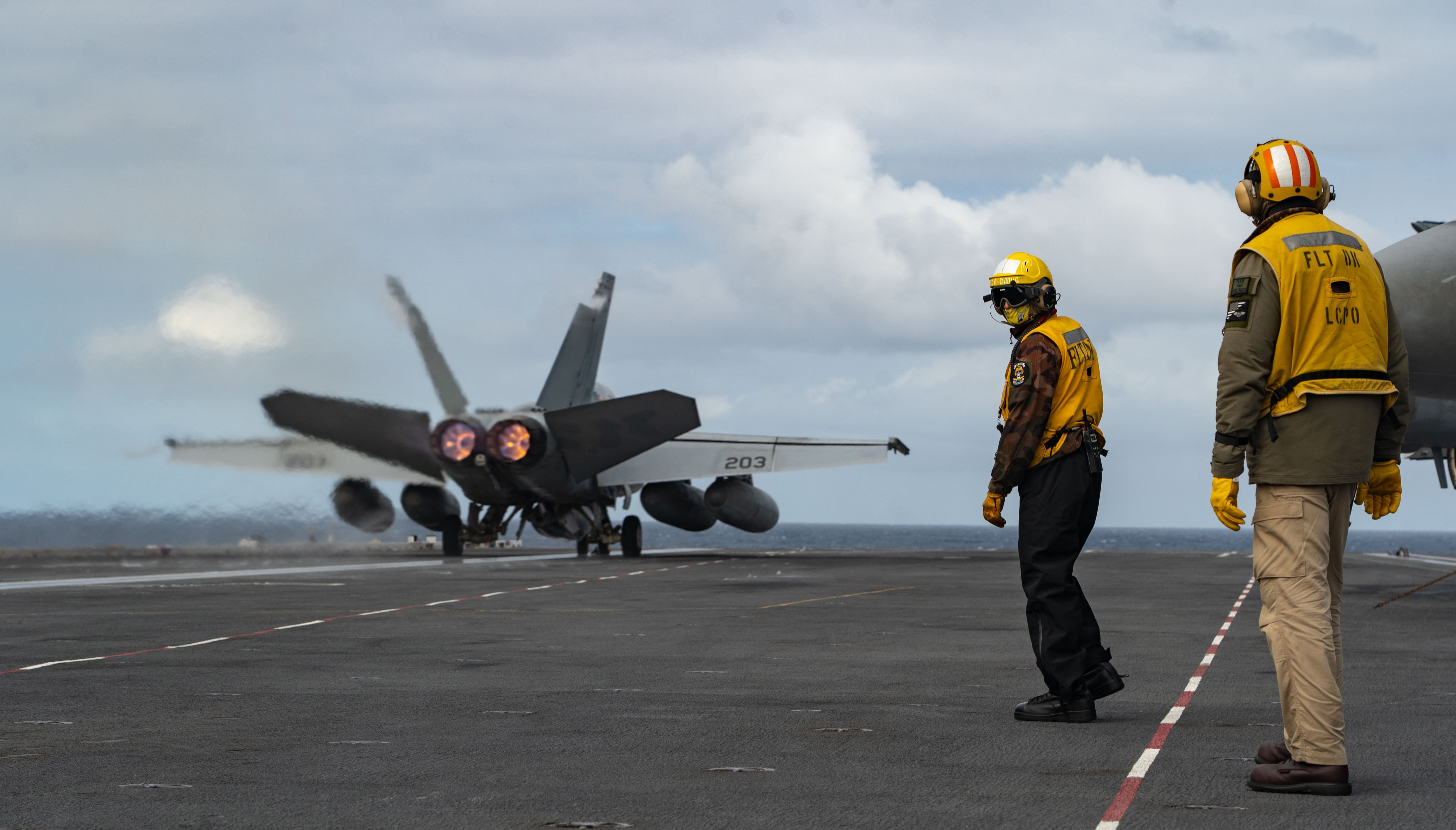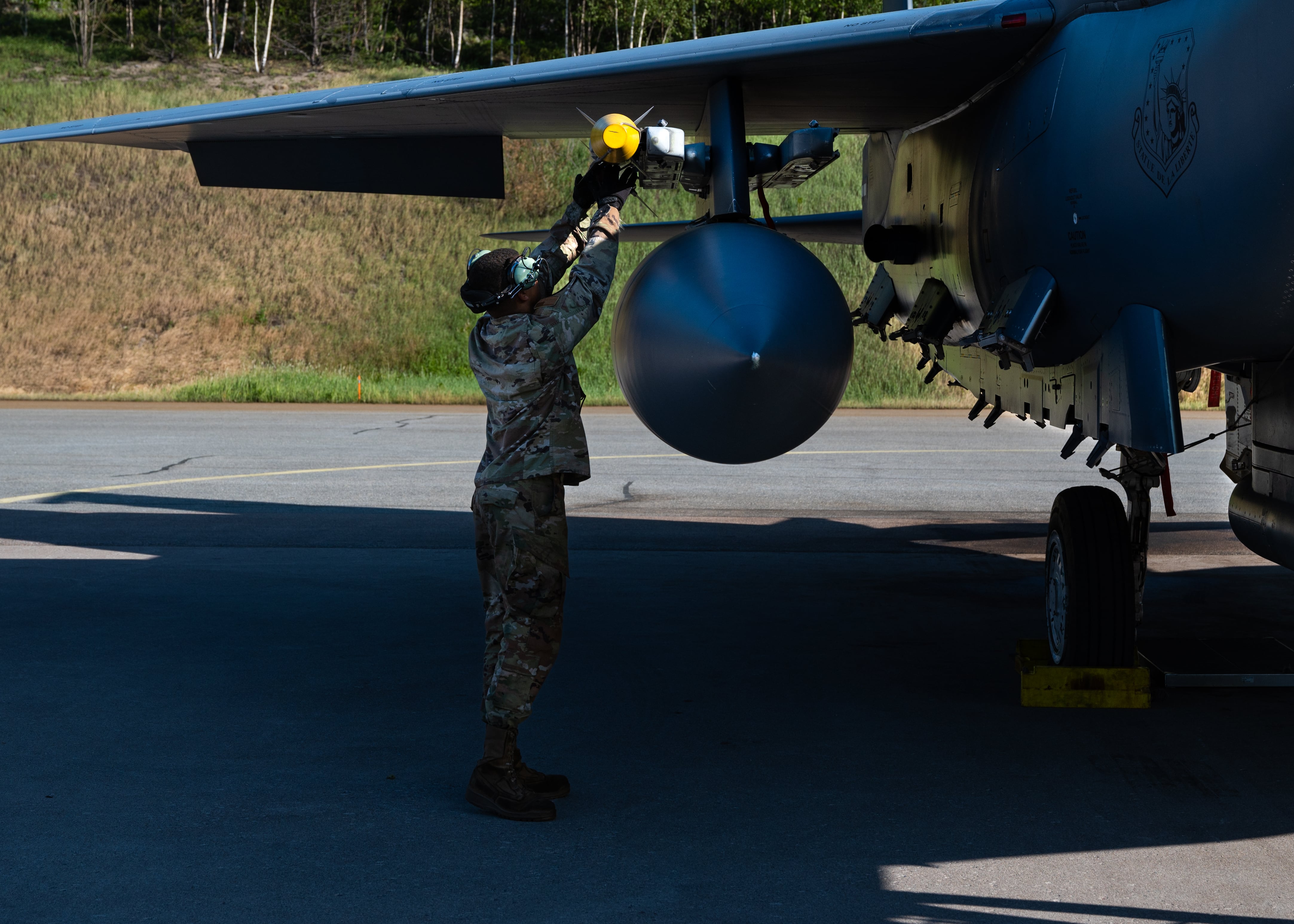The U.S. Navy and its NATO allies and partners wrapped up their annual maritime-focused exercise in the Baltic region Friday.
Baltic Operations 2023, or BALTOPS, concludes a week after American and European pilots flew their final sorties for the High North’s premier aerial warfare drill, Arctic Challenge 2023. The concurrent exercises, which included U.S. Air Force and Navy personnel, aimed to bolster Euro-American defense cooperation.
BALTOPS, which featured a cohort of 50 ships and 45 aircraft led by U.S. Naval Forces Europe-Africa and U.S. 6th Fleet, kicked-off in Estonia June 4. Over the following two weeks, the navies of 20 countries — four more than last year — simulated maritime and amphibious combat scenarios in and around the Baltic Sea.
More than 6,000 personnel, including about 1,500 U.S. sailors, Marines and airmen, took part in the exercise, more than twice as many as in 2020.
The destroyer Paul Ignatius and command ship Mount Whitney headlined the U.S. Navy contingent. American forces flaunted a number of new capabilities during the exercise. Unmanned surface vessels rehearsed personnel rescues and medical transfers. A Danish frigate leveraged U.S. logistical capabilities to reload a dummy missile. Participating countries also wargamed enemy attacks on NATO-member satellites and GPS systems.
BALTOPS 23 represents “a tangible indication of commitment to collective defense capability across the NATO Alliance,” Vice Adm. Thomas Ishee, commander of Naval Striking and Support Forces NATO and U.S. 6th Fleet, said in a June 4 press release. “We continue to meet the security challenges of today, and prepare for tomorrow, through interoperability and seamless integration in real world operations.”

U.S. Air Force and Navy pilots finished their drills for Arctic Challenge, a Nordic-run aerial warfare exercise featuring 10 other NATO members, on June 9.
The Air Force press office described this year’s Arctic Challenge Exercise, hosted in Finland, as a symbol of “the strength and capability of the Alliance throughout the Nordic region.”
Lucky and observant onlookers might have spotted an F-35A Lightning II, F-15E Strike Eagle or KC-135R Stratotanker streaking across the Arctic sky. The 48th Fighter Wing out of RAF Lakenheath in England teamed up with Mildenhall’s 100th Air Refueling Wing and the Maine Air National Guard’s 101st Air Refueling Wing to coordinate U.S. Air Force flight contributions to Arctic Challenge. Personnel from Nellis Air Force Base’s 414th Combat Training Squadron, which conducts Red Flag exercises in Nevada, helped U.S. and partner pilots simulate combat scenarios.

Though BALTOPS and Arctic Challenge were not directly connected, some units participated in both. Navy pilots with Carrier Air Wing 8, assigned to the Gerald R. Ford Carrier Strike Group, flew their aircraft in mock missions for both exercises, according to U.S. 6th Fleet spokesperson Lt. Cmdr. Karl Schonberg.
“Participating in BALTOPS 23 and Arctic Challenge allows us to conduct integrated training and high-intensity activities with our Allies and partners to enhance collective defense capability across the NATO Alliance,” Capt. Dan Catlin, commander of Carrier Air Wing 8, told Military Times.
Russia’s invasion of Ukraine has breathed new life into NATO.
Chided as an antiquated and restrictive partnership during the Trump administration, the alliance has regained its status as a bulwark against future Russian aggression in the eyes of analysts and policymakers on both sides of the Atlantic. Finland made its BALTOPS debut as a full-fledged NATO member after joining the alliance in April, ditching decades of overt strategic neutrality. Sweden’s bid for entry, stonewalled by Turkey, awaits confirmation.

The Nordic exercises come on the heels of several other high-profile Euro-American military initiatives. The Ford, the world’s largest warship, made a port call in Oslo in late May before sailing to the Arctic Circle to partake in Arctic Challenge. The U.S. and its NATO allies showcased their collaborative air and missile defense systems during the biannual Formidable Shield exercise in May.
Defender 23, a two-month joint operation encompassing several land-based drills across the continent, kicked off in late April. Defender’s aerial corollary, Air Defender 2023—NATO’s largest ever multinational air warfare exercise—began on Monday and concludes June 23.

Russia has followed the U.S.-NATO exercise spree with agitation. The Kremlin fumed when it caught wind of the Ford’s arrival in Norway. Once a willing participant in BALTOPS, the Russian military launched a Baltic exercise of its own on June 5, deploying roughly 3,500 soldiers, 40 ships, and 25 aircraft in response to what it has described as a “provocative” NATO maneuver.
Russia has mirrored NATO’s Baltic wargames in the past. In 2020, Russian fighter jets strafed practice maritime targets as alliance ships drilled in the waves below. The following year, Russian warships sailed around Stockholm one day after allied vessels set off for BALTOPS exercises. There have been no reports of collisions or near-misses between Russian and NATO forces deployed to the region.
Jaime Moore-Carrillo is an editorial fellow for Military Times and Defense News. A Boston native, Jaime graduated with degrees in international affairs, history, and Arabic from Georgetown University, where he served as a senior editor for the school's student-run paper, The Hoya.




